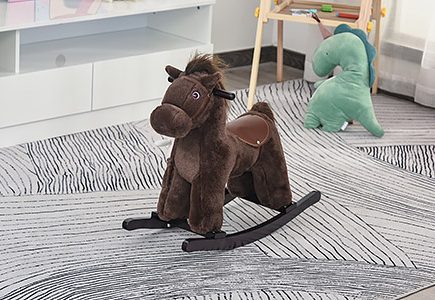
Waterproofing your tent is essential for a safe and comfortable outdoor experience. It prevents leaks and water seepage, keeping your sleeping area dry and free from mold or mildew. A waterproof tent also lasts longer by preserving the fabric’s protective coating against rain, dirt, and UV damage, which saves you money in the long run.
1. Step-by-Step Waterproofing Process

Step 1: Clean Your Tent Before Waterproofing
Before applying any waterproofing treatment, it’s essential to clean your tent:
- Shake Out Debris: Remove loose dirt, leaves, and crumbs.
- Wash Gently: Use a soft sponge, lukewarm water, and mild soap to clean the tent’s fabric.
- Dry Thoroughly: Ensure your tent is completely dry before applying waterproof spray or seam sealer.
Step 2: Reapply Waterproof Coating
To restore your tent’s waterproofing, follow these steps:
- Set Up Your Tent Outdoors: This will help you evenly apply the waterproofing spray.
- Spray Evenly: Hold the waterproof spray about 6–8 inches from the tent’s surface and apply in even strokes.
- Focus on the Rainfly and Seams: These areas are most prone to leaks and should get extra attention.
The Outsunny 10’x12’ Double Roof Patio Gazebo provides shade and additional rain protection, making it an excellent companion for your tent during rainy trips.
Step 3: Seal the Seams
Tent seams are vulnerable to leaks, so sealing them is crucial:
- Apply Seam Sealer: Use a brush or applicator to coat the seams with seam sealer.
- Let It Dry: Allow the sealer to dry completely before packing your tent.
Step 4: Repair Any Tears or Holes
Even small rips can compromise your tent’s waterproofing. Fix them using adhesive repair patches.
2. Tools and Supplies You’ll Need
Before starting the waterproofing process, gather the following tools and products:
| Tool/Product | Purpose |
| Waterproof spray | Replenishes water repellency |
| Seam sealer | Seals seams to prevent leaks |
| Tent repair patches | Fixes small rips and holes |
| Soft sponge or cloth | Applies waterproofing solution evenly |
| Tent brush | Removes dirt from seams and fabric |
Pro Tip:
Always choose waterproofing products that match your tent’s fabric type for optimal results. For example:
- Silicone-Based Sprays – Ideal for nylon or polyester tents.
- Acrylic-Based Sprays – Better suited for canvas tents.

For additional rain and UV protection, consider external coverings like the Outsunny 10′ x 10′ Heavy-Duty Outdoor Storage Tent. Designed for durability, this waterproof portable shed shields bikes, motorcycles, lawnmowers, firewood, and garden tools from dirt, rain, and UV exposure. The reinforced ratchet tension system ensures a tight and secure fit, while the sturdy galvanized steel frame resists cracking and peeling.
3. Tent Waterproofing Comparison
Silicone-Based Waterproof Spray – Best for Rainfly and Tent Body
This spray forms a protective barrier on the tent’s exterior fabric, enhancing its water repellency.
Key Benefits:
- Long-lasting protection against rain and moisture.
- Keeps tent fabric dry during downpours.
- Works well on synthetic materials like nylon and polyester.

Seam Sealer – Essential for Tent Seams
Tent seams are vulnerable to leaks, making seam sealing a must for comprehensive waterproofing.
Key Benefits:
- Prevents water from seeping through stitched areas.
- Strengthens seams and improves overall tent durability.
Adhesive Repair Patches – Fix Fabric Tears
Small rips or tears in the tent can compromise its waterproofing. Adhesive patches offer a quick fix to restore the tent’s integrity.
Key Benefits:
- Easy to apply and effective for temporary or permanent repair.
- Maintains waterproof protection even after fabric damage.
4. Essential Tent Maintenance Practices
Proper tent maintenance goes hand in hand with effective waterproofing. By following these essential care tips, you can extend your tent’s lifespan, preserve its waterproof coating, and ensure that it performs well in any weather.

Skip the Machine – Hand Wash Your Tent for Longer Life
Machine washing may be fast, but it’s harsh on your tent’s delicate waterproof coating. This can cause the fabric to lose its water-repellent properties and compromise its durability.
Smart Maintenance Tips:
- Use Mild Soap: Clean dirt and grime with a gentle, non-detergent soap.
- Soft Sponge or Cloth: Avoid scrubbing too hard to prevent damaging the tent’s coating.
- Wash After Each Trip: Especially after camping in muddy or dusty conditions.
Dry it Right – Say Goodbye to Mold and Mildew
One of the quickest ways to ruin a tent is by packing it up while it’s damp. This can lead to mold, mildew, and bad odors that are tough to remove.
Drying Tips:
- Air Dry Completely: Hang your tent outdoors or in a well-ventilated area. Make sure every part—especially the seams and corners—is dry before storing.
- Avoid Direct Sunlight for Long Periods: Prolonged sun exposure can degrade the fabric, so dry your tent in the shade if possible.
- Shake Off Moisture: Gently shake off any water droplets after rain to speed up the drying process.
Reapply Waterproofing Regularly – Stay One Step Ahead of the Rain
Even the best waterproof coatings wear off over time, especially with frequent use. Regular reapplication keeps your tent’s water resistance at its peak.
How to Maintain Waterproofing:
- Waterproof Spray: Reapply every 6 to 12 months, or more often if you notice reduced water beading on the fabric.
- Seam Sealer: Focus on seams, where water tends to sneak through.
- Inspect Before Camping: Check for small rips, tears, or areas where the coating may have worn off and address them promptly.

Bonus Tip: Upgrade Your Outdoor Setup with a Waterproof Pop-Up Tent
For added protection and versatility, consider investing in the Outsunny 10′ x 12′ HardTop Gazebo, designed to provide stylish, all-weather protection. Featuring a durable aluminum frame and a translucent polycarbonate roof, this gazebo blocks rain and UV rays while still allowing natural light to filter through.
The zippered mosquito netting and weather-resistant curtains offer added privacy and protection from insects, making it perfect for backyard lounging, outdoor dining, or hosting gatherings. It features a waterproof canopy, convenient storage bag, and easy setup, making it a great option for additional shelter, gear storage, or lounging space during rainy trips.
5. Common Waterproofing Mistakes to Avoid
Mistakes and Solutions at a Glance
| Common Mistake | What Happens | How to Avoid It |
| Using the Wrong Products | Waterproofing fails or damages fabric | Use sprays and sealers designed for your tent’s material |
| Skipping Cleaning Before Waterproofing | Dirt blocks waterproof coating from sticking | Clean and dry your tent thoroughly before applying waterproofing |
| Applying Too Much Spray | Reduces breathability, stiffens fabric | Apply thin, even coats and let each layer dry before reapplying |

1. Using the Wrong Products – Match the Right Product to Your Tent’s Material
Not all waterproofing products work with every type of tent fabric. Using the wrong product can compromise waterproofing or damage your tent.
Avoid This Mistake By:
- Checking Fabric Type: Nylon and polyester tents benefit from silicone-based sprays, while canvas tents may require an acrylic-based solution.
- Reading Labels: Always choose products designed for your tent’s material.
2. Skipping Cleaning Before Waterproofing – Dirt Is the Enemy of Waterproofing
Applying waterproofing spray on a dirty tent prevents the coating from adhering properly, leaving your tent vulnerable to leaks.
Avoid This Mistake By:
- Cleaning the Tent First: Use a soft sponge, mild soap, and water to gently remove dirt and debris.
- Drying Thoroughly: Allow the tent to air dry completely before applying any waterproofing products.
3. Applying Too Much Spray – Less Is More
Over-saturating the fabric with waterproof spray might seem helpful, but it can reduce breathability, making your tent stuffy and uncomfortable.
Avoid This Mistake By:
- Using Thin, Even Coats: Apply a light mist rather than soaking the fabric.
- Letting Each Layer Dry: If additional layers are needed, allow each coat to dry fully before reapplying.
- Following Instructions: Always follow the manufacturer’s guidelines on how much to apply.
Pro Tips for Flawless Waterproofing
- Perform a Water Test After Waterproofing: Set up your tent and spray it with water to check for any leaks or areas needing additional treatment.
- Store Waterproofing Products Properly: Keep sprays, seam sealers, and patches in a cool, dry place to preserve their effectiveness.
- Don’t Wait Too Long: Reapply waterproofing every 6 to 12 months, or after any particularly rainy camping trips.
6. Proper Tent Storage Techniques
After waterproofing your tent, store it correctly to maintain its condition:
Store in a Cool, Dry Place
- Why: Prevents mold, mildew, and odors.
- Tip: Avoid storing in damp garages or sheds.
Use a Breathable Storage Bag
- Why: Prevents condensation buildup.
- Tip: Use cotton or mesh bags for better air circulation.
Avoid Long-Term Compression
- Why: Prevents permanent creases and weak seams.
- Tip: Loosely fold and store; alternate folding patterns to avoid wear.
7. Product Picks for Enhanced Camping Experiences
Waterproofing is just one part of successful camping. Here are some Aosom products that can enhance your outdoor adventures:

Outsunny 13 ft Party Tent
Outsunny 13 ft Party Tent, designed for weddings, garden parties, and outdoor gatherings. This waterproof PE canopy offers protection from light wind and harmful UV rays, while six removable sidewalls let you customize your setup for privacy and ventilation. A sturdy metal frame with guy ropes and ground nails ensures stability, while large tent windows and a zippered door provide great visibility and easy access. Ideal for celebrations, markets, and outdoor events!.

Outsunny 2-Person Waterproof Camping Tent
Outsunny 2-Man Waterproof Camping Tent, Featuring a 3000mm water-resistant exterior and a sewn-in groundsheet, this tent keeps you protected from the elements. A mesh window allows for ventilation while maintaining privacy, and a built-in lantern hook adds nighttime convenience

Outsunny Waterproof SUV Tent – 5-6 Person Car Camping Shelter with 3 Doors
Outsunny 2000mm Waterproof SUV Tent, Designed to fit SUVs, CUVs, minivans, or as a standalone tent, it provides spacious shelter for 5-6 people. The 2000mm water-resistant polyester shell keeps you dry, while the mesh window ensures airflow. Featuring three doors for easy access and including ground stakes and guy ropes for stability, this lightweight 11 lb tent is perfect for road trips, tailgating, and outdoor adventures!
8. Final Tips for Waterproofing Success
- Check Your Tent After Each Trip:
Inspect for wear, small tears, or seam leaks, and fix issues promptly to avoid worsening damage. - Reapply Waterproofing Regularly:
Apply waterproof spray and seam sealer every 6 to 12 months or after exposure to heavy rain. - Invest in Quality Gear:
Choose durable, high-quality tents, tarps, and accessories for better waterproofing and long-lasting performance. - Perform a Water Test at Home:
Set up your tent in your backyard and spray it with water to check for leaks before heading on your next trip. - Store Your Tent Properly:
Dry your tent thoroughly, pack it loosely in a breathable storage bag, and keep it in a cool, dry place. - Keep a Tent Repair Kit Handy:
Carry seam sealer, waterproof patches, and repair tape during trips to handle emergency fixes on the go. - Avoid Prolonged Sun Exposure:
UV rays can degrade the waterproof coating, so pitch your tent in shaded areas when possible.
9. Frequently Asked Questions
1. How often should I waterproof my tent to prevent leaks?
Waterproof your tent every 6 to 12 months, depending on how often you camp and the conditions it faces. If your tent is exposed to frequent rain, intense sunlight, or harsh terrains, consider waterproofing it more often. Regular maintenance ensures your tent stays water-resistant and extends its life.
2. What should I do if my tent is wet but needs waterproofing?
Never apply waterproofing to a wet tent. First, thoroughly dry the tent to ensure the waterproofing product adheres properly. Applying it to wet fabric can compromise the treatment and cause ineffective protection, leading to leaks during your next camping trip.
3. How can I fix a leaking seam in my tent?
To repair a leaking seam, apply a high-quality seam sealer on both the inside and outside of the seam. Make sure to cover the entire seam, then let it dry completely before using the tent again. This creates a strong waterproof barrier to prevent water from seeping through the seams.
4. What’s the quickest way to dry my tent after waterproofing?
After waterproofing, set your tent up outside on a warm, sunny day or hang it in a well-ventilated space. Ensure the tent is fully dry, including any inner areas, before packing it away to prevent mold growth, mildew, and damage to the waterproofing coating.
5. How can I tell if my tent is truly waterproof or just water-resistant?
Not all tents are fully waterproof—some are only water-resistant, designed to handle light rain but not prolonged downpours. Test your tent’s waterproofing by checking if water beads on the fabric. If it doesn’t, or if water seeps through, applying a waterproofing treatment will improve its resistance to moisture.














